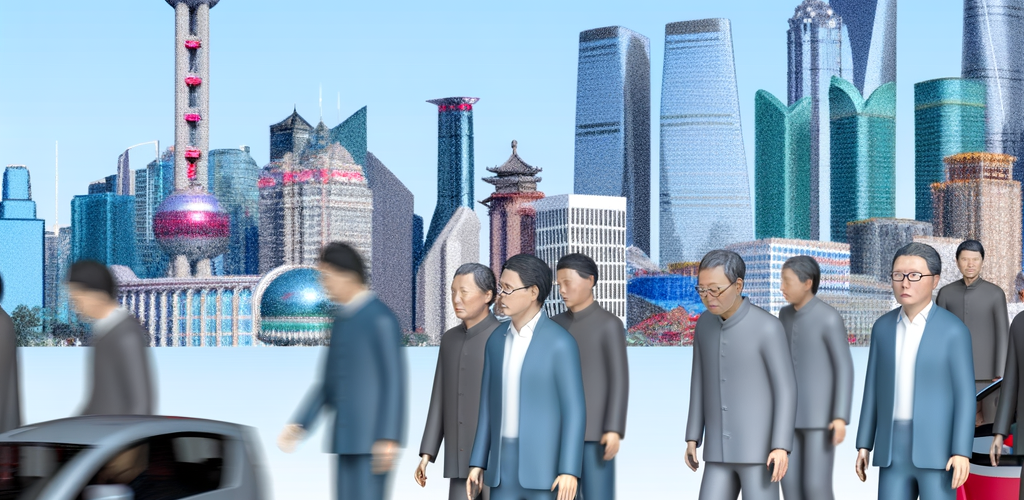In the rapidly evolving and top Largest Automotive Market of China, foreign automakers are forging strategic partnerships with domestic car brands through Joint Ventures to navigate the complex regulatory landscape and align with consumer preferences. These alliances are key to tackling the challenges posed by the growing economy, urbanization, and intense market competition. They’re particularly crucial in the Electric Vehicles (EVs) and New Energy Vehicles (NEVs) sector, driven by environmental concerns and government incentives. By aligning with local brands, foreign entities can leverage local expertise, stay ahead in technological advancements, and tap into a vast consumer base, ensuring they remain competitive and relevant in a market that prioritizes innovation and sustainability.
In the bustling streets of China’s rapidly expanding cities, the roar of the automotive industry echoes as a testament to the country’s economic prowess and its pivotal role in shaping the future of global mobility. As the world’s largest automotive market, China stands at the forefront of production and sales, driven by a growing economy, an expanding middle class, and an accelerating pace of urbanization. This vibrant landscape offers a unique blend of opportunities and challenges for both domestic car brands and foreign automakers seeking to make their mark amidst intense market competition and shifting consumer preferences.
The heart of China’s automotive revolution beats strongest in its embrace of Electric Vehicles (EVs) and New Energy Vehicles (NEVs), propelled by a combination of government incentives, environmental concerns, and technological advancements. The surge of electrification is reshaping urban landscapes, setting new benchmarks for innovation and sustainability in the automotive sector. Foreign automakers, in their quest to tap into this lucrative market, often enter strategic partnerships through joint ventures with local Chinese companies, navigating the complex regulatory landscape to access a vast and eager consumer base.
This article delves into the dynamic and competitive environment of China’s automotive industry, exploring how strategic partnerships, technological advancements, and government policies are steering the market toward a future defined by electric mobility and innovation. From decoding the regulatory landscape that governs domestic and foreign car brands to examining the consumer preferences fueling the demand for EVs and NEVs, we offer insights into the multifaceted factors driving growth in the world’s largest automotive market. Join us as we journey through the sections that illuminate the path ahead, including the electrification of the giant, the competitive edge in market dynamics, and the crossroads of innovation, all of which are shaping the destiny of China’s automotive industry in the global arena.
1. “Navigating the Terrain: How Foreign Automakers Forge Strategic Partnerships to Thrive in China’s Largest Automotive Market”

In the rapidly evolving landscape of the world’s Largest Automotive Market, foreign automakers are keenly aware that success hinges on their ability to adeptly navigate the complex regulatory landscape and align with the shifting consumer preferences that characterize China’s vibrant economy. With the country’s growing economy fueling a burgeoning middle class and accelerated urbanization, the demand for automobiles, particularly Electric Vehicles (EVs) and New Energy Vehicles (NEVs), has surged. This shift is significantly driven by environmental concerns and robust government incentives aimed at promoting sustainable transportation solutions.
To tap into this lucrative market, foreign automakers have found that forming Joint Ventures with domestic Chinese car brands is not just beneficial but essential. These strategic partnerships serve as a critical bridge to understanding and integrating into the local market dynamics, allowing for a smoother adaptation to China’s distinct regulatory, cultural, and business environment. By collaborating with local entities, foreign companies gain invaluable insights into consumer preferences, which can vary markedly from those in Western markets. This deep market insight enables them to tailor their product offerings to meet the unique demands of Chinese consumers, ranging from luxury sedans to the increasingly popular EVs and NEVs.
The importance of these Joint Ventures extends beyond mere market entry. They are a testament to the significance of leveraging local expertise and resources to overcome barriers to entry, such as navigating the intricate regulatory landscape that governs the automotive industry in China. These regulations are not only complex but are also subject to frequent changes, making it challenging for foreign entities to keep pace without strong local partners.
Moreover, the technological advancements that are propelling the global automotive industry forward are also reshaping the market in China. The country’s emphasis on innovation, particularly in the realm of electric and new energy vehicles, has set a high bar for foreign automakers. To compete effectively, these companies must not only bring cutting-edge technology to the table but also align their innovations with the environmental goals and government incentives guiding the market’s evolution.
The competition in China’s automotive market is fierce, with both domestic and international players vying for a share of the pie. This competitive landscape is further intensified by the rapid pace of technological advancements and the changing tides of consumer preferences. Foreign automakers, therefore, find that their success in this market is intricately linked to the strength and strategic value of their local partnerships. These collaborations enable them to access the vast consumer base, navigate the regulatory intricacies, and stay abreast of the technological trends shaping the future of mobility in China.
In conclusion, as the largest automotive market in the world continues to grow and evolve, foreign automakers recognize that their ability to thrive is deeply intertwined with their strategic partnerships within China. These alliances are not merely a means to an end but a fundamental part of their strategy to succeed in a market characterized by intense competition, a complex regulatory landscape, and a rapidly changing consumer base driven by growing environmental concerns and a commitment to technological innovation.
In conclusion, the China automotive market stands as the top contender in the global arena, underpinned by its status as the largest automotive market. With a landscape marked by a growing economy, rapid urbanization, and an expanding middle class, the appetite for both domestic car brands and foreign models, particularly Electric Vehicles (EVs) and New Energy Vehicles (NEVs), continues to surge. This dynamic market, driven by environmental concerns and bolstered by significant government incentives, offers unparalleled opportunities for both domestic and foreign automakers.
However, navigating the complex regulatory landscape of China’s automotive sector requires strategic finesse and a deep understanding of local consumer preferences, technological advancements, and market trends. Foreign automakers have found success through forming joint ventures with local Chinese companies, a testament to the power of strategic partnerships in accessing China’s vast consumer base and thriving despite intense market competition.
The future of the automotive industry in China looks promising, with continued advancements in EV and NEV technologies, evolving consumer demands, and the steady march of urbanization and economic growth. As foreign and domestic players alike adapt to the shifting tides of government policies and global economic trends, the importance of innovation, adaptability, and strategic alliances has never been more critical. The road ahead is both challenging and exciting for stakeholders in China’s automotive market, which remains at the forefront of shaping the future of mobility on a global scale.







